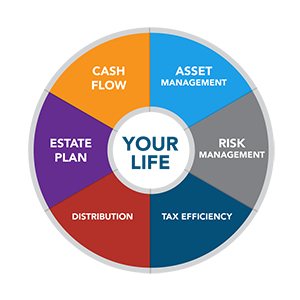
A Roth IRA calculator can help you calculate how much you can contribute and withdraw tax-free. How to maximize your contributions, tax-free income, Qualified distributions and more. Learn more about the benefits of a Roth IRA to start planning your retirement. It is never too late if you want to make a Roth IRA contribution. You must be aware of the restrictions before you can make the most of your contribution.
Tax-free growth
A Roth IRA calculator projects the growth rate of your money and then compares it against regular taxable savings. These savings accounts are mainly for U.S. residents, but they also offer information about other types of IRAs. A Roth IRA account may be worth up to $240,000 more by the age 65 than a regular savings account. Additionally, Roth IRA income is exempt from tax.
There are many institutions that can open a Roth IRA. Open a Roth IRA with any of the large banks and online investment firms. Each firm has its own rules and fees, and will offer different perks. Roth IRA contributions cannot be deducted from your taxes, but you may get a 50% tax break for the first $2,000 that you contribute. You should understand the tax benefits of investing before you make any decisions.

Get tax-free income
A Roth IRA, a type of individual retirement account, is one example. It is a valuable tool in building retirement savings. Additionally, it can grow tax free. The Roth IRA calculator can help you determine how much you might earn and how much savings you could have with a Roth IRA. This calculator breaks down your annual IRA contribution into a Roth or Traditional contribution. The difference between these two contributions is determined by the amount of interest that has been accrued over time. The Roth IRA calculator helps you decide which combination of IRAs is best for your tax savings.
Traditional IRAs do not allow you to deduct your contributions from your taxes. Withdrawals, however, are subjected to penalties and taxes. A Roth IRA may be withdrawn any year, even before you turn 59 1/2. So if your age is not yet 59 1/2, you can still benefit from the Roth IRA. Older Roth IRAs are subject to certain rules and conditions. You must be age 59 1/2 or older to withdraw from your Roth IRA, and you must spend at least $10,000 in a single year to buy a first-time home.
Contribution limits
You can use IRAs to save money on taxes and invest for retirement. Traditional and Roth IRAs share the same IRA contribution limit. SEP IRAs allow you up to 25% of the salary. You cannot contribute if you have a pension. A spouse and you may contribute up $75,000 if your spouse is over 50.
The maximum amount that you can invest in a Roth IRA depends on your modified adjusted Gross Income (MAGI). The yearly limit for Roth IRA contributions is $6,000 for singles, $24,000 for married couples filing separately, and $58,000 for married couples filing jointly. Income limits do not apply to traditional IRA contributions. Other retirement plans, like investment-only and 401k, also have annual limits.

Qualified distributions
You might be curious about the rules for qualified distributions if your Roth IRA is set up. This is a complicated query to answer. However the answer is clear: if you withdraw funds from your Roth IRA within a given time, you are likely eligible to receive tax-free distributions. Roth IRAs provide tax-sheltered retirement accounts. Qualified withdrawals are those that you make after turning 70-1/2, without any penalties.
Calculations are based on your adjusted gross income as calculated by the calculator. This assumes that your IRA contributions were not made in the year that you reach retirement age. The calculator uses your adjusted Gross Income to calculate the amount you can deduct from your taxes for each tax year. If you are married, please check the box. Otherwise it assumes you're single.
FAQ
What are the advantages of wealth management?
Wealth management gives you access to financial services 24/7. You don't need to wait until retirement to save for your future. If you are looking to save money for a rainy-day, it is also logical.
There are many ways you can put your savings to work for your best interests.
For instance, you could invest your money into shares or bonds to earn interest. You can also purchase property to increase your income.
A wealth manager will take care of your money if you choose to use them. You don't have to worry about protecting your investments.
What is risk management in investment administration?
Risk management is the art of managing risks through the assessment and mitigation of potential losses. It involves identifying, measuring, monitoring, and controlling risks.
Risk management is an integral part of any investment strategy. The purpose of risk management, is to minimize loss and maximize return.
The following are key elements to risk management:
-
Identifying the source of risk
-
Measuring and monitoring the risk
-
How to control the risk
-
How to manage the risk
Why is it important to manage wealth?
First, you must take control over your money. Understanding how much you have and what it costs is key to financial freedom.
You also need to know if you are saving enough for retirement, paying debts, and building an emergency fund.
If you don't do this, then you may end up spending all your savings on unplanned expenses such as unexpected medical bills and car repairs.
Statistics
- US resident who opens a new IBKR Pro individual or joint account receives a 0.25% rate reduction on margin loans. (nerdwallet.com)
- As previously mentioned, according to a 2017 study, stocks were found to be a highly successful investment, with the rate of return averaging around seven percent. (fortunebuilders.com)
- A recent survey of financial advisors finds the median advisory fee (up to $1 million AUM) is just around 1%.1 (investopedia.com)
- Newer, fully-automated Roboadvisor platforms intended as wealth management tools for ordinary individuals often charge far less than 1% per year of AUM and come with low minimum account balances to get started. (investopedia.com)
External Links
How To
How to Beat Inflation With Investments
Inflation is one of the most important factors that influence your financial security. Inflation has been steadily rising over the last few decades. The rate at which inflation increases varies from country to country. India, for example, is experiencing a higher rate of inflation than China. This means that even though you may have saved money, your future income might not be sufficient. You risk losing opportunities to earn additional income if you don't invest often. So, how can you combat inflation?
Stocks investing is one way of beating inflation. Stocks can offer a high return on your investment (ROI). You can also use these funds for real estate, gold, silver, and any other asset that promises a higher ROI. There are some things to consider before you decide to invest in stocks.
First, decide which stock market you would like to be a part of. Do you prefer small-cap companies or large-cap companies? Choose according. Next, learn about the nature of the stock markets you are interested in. Are you looking at growth stocks or value stocks? Decide accordingly. Finally, you need to understand the risks associated the type of stockmarket you choose. There are many stocks on the stock market today. Some are risky; others are safe. Choose wisely.
If you are planning to invest in the stock market, make sure you take advice from experts. They will advise you if your decision is correct. You should diversify your portfolio if you intend to invest in the stock market. Diversifying increases your chances of earning a decent profit. You risk losing everything if only one company invests in your portfolio.
You can consult a financial advisor if you need further assistance. These professionals can guide you through the process for investing in stocks. They will ensure you make the right choice of stock to invest in. They will help you decide when to exit the stock exchange, depending on your goals.